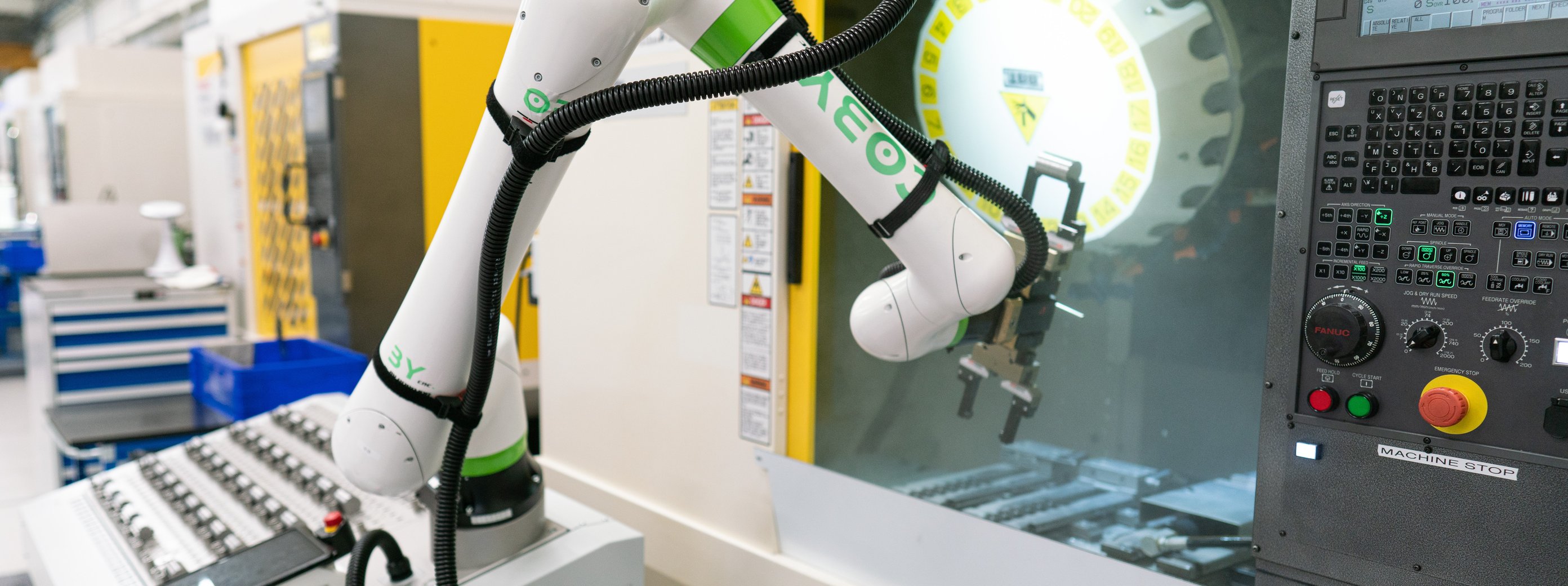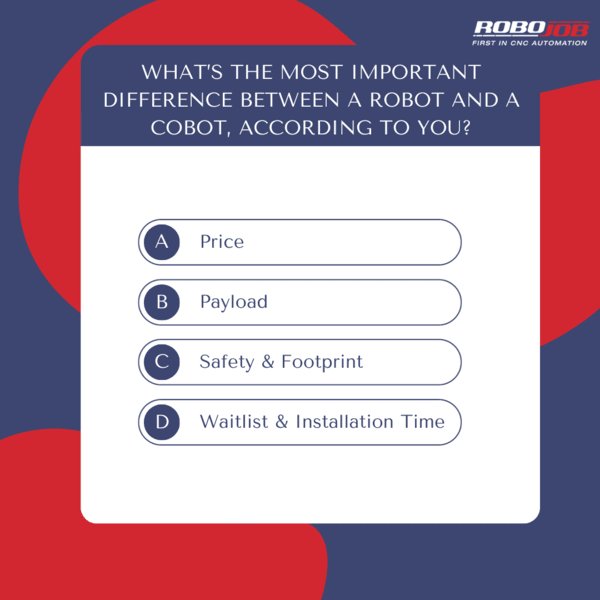
The most important difference between a robot and a cobot
The most important difference between a robot and a cobot
In December 2023 we conducted a poll on Linkedin about the differences between a robot and a cobot. Our R&D specialist Zeno Gillis walks you through.
The most important difference between a cobot and a robot is the Payload. That’s what our panel of experts has decided during our first poll on Linkedin. This answer received 50% of the votes. The very close runner-up was Safety (46%), third was Price (4%) and last was Waiting & Installation Time with 0% of the votes. Here's why:

1. Payload
The option Payload can call itself the winner of our poll, receiving 50% of the votes. The majority of voters chose Payload to be the most important difference between a robot and a cobot as there’s simply no comparison between a robot that can bear workpieces of up to 165kg and a cobot that handles 10 kg, as it’s your workpieces that dictate your needs.
It’s only logical that companies avoid disproportional investments by selecting a robot or cobot that carries nothing but the desired payload. Therefore it shouldn’t be a surprise that payload is the most important difference between a cobot and a robot according to our respondents.
2. Safety & Footprint
Safety and Footprint ended second, with one vote less than payload. There’s no better way to tell a cobot and a robot apart by their safety and the ability to collaborate with the operator. Industrial robots are scared of humans, resulting in slowing down and eventually completely freeze when someone approaches.
Cobots are more like dogs: they like it when you’re around, and they will hold still if you pet them. Being able to come closer provides a greater liberty of working alongside the cobot, opening many doors for smart collaboration.
These pettable robots are currently built to work with lightweight workpieces, safety is integrated in the arm by means of force sensors. In comparison to conventional robots, cobots don’t need extra safety devices to prevent harming operators or equipment. Watch this 26 second video to see how accurate the safety detection system of a cobot is.
Footprint is gaining popularity as machine halls are bursting at the seams. And it’s not just the size of the machines, it’s their extensive safety and slow down zones as well. If you work with lightweight workpieces, you might save up a lot of room by choosing a compact solution like a cobot.
3. Price
We were surprised to see that only one courageous soul indicated that price was the most important factor when choosing between a robot and a cobot. OK, the cobot itself might be a little more expensive than a robot with the same payload, but it doesn’t have any hidden safety costs. The total cost of ownership for a cobot is lower than for a robot as the safety mechanisms are inherent to the cobot, so there’s no need to invest in external safety measures such as sensors or fencing.
It’s a strong signal that only one respondent acknowledged this for now. We bet that if we were to relaunch this poll in a few years, the answer Price would definitely be more popular.
By the way, did you know that market researchers estimate that the cobot market is to exceed 100 billion Dollar by 2043, with over 4 million installations per year? We’re curious to see where this goes.
4. Waitlist & Installation time
It was either not relevant to suggest as an answer, or it just didn’t resonate with our sample audience. That’s nice to hear, as it's hard to speed up the installation waitlist. Luckily DIY-cobots are on the rise.
And what’s not to like: an automation system that you can configure yourself, with the assistance of an extensive video tutorial library. Hello, future!
Thank you to everyone who voted!
This was the first blog in our series Go To The Polls.
Blog 1: The most important difference between a robot and a cobot
Blog 2: This is the favorite event type from CNC experts
Blog 3: CNC-experts prefer this measuring method for their automated manufacturing process
Do you have a topic in mind to ask to our robot community? We’d love to hear from you! Don’t hesitate to mail us via info@robojob.eu.